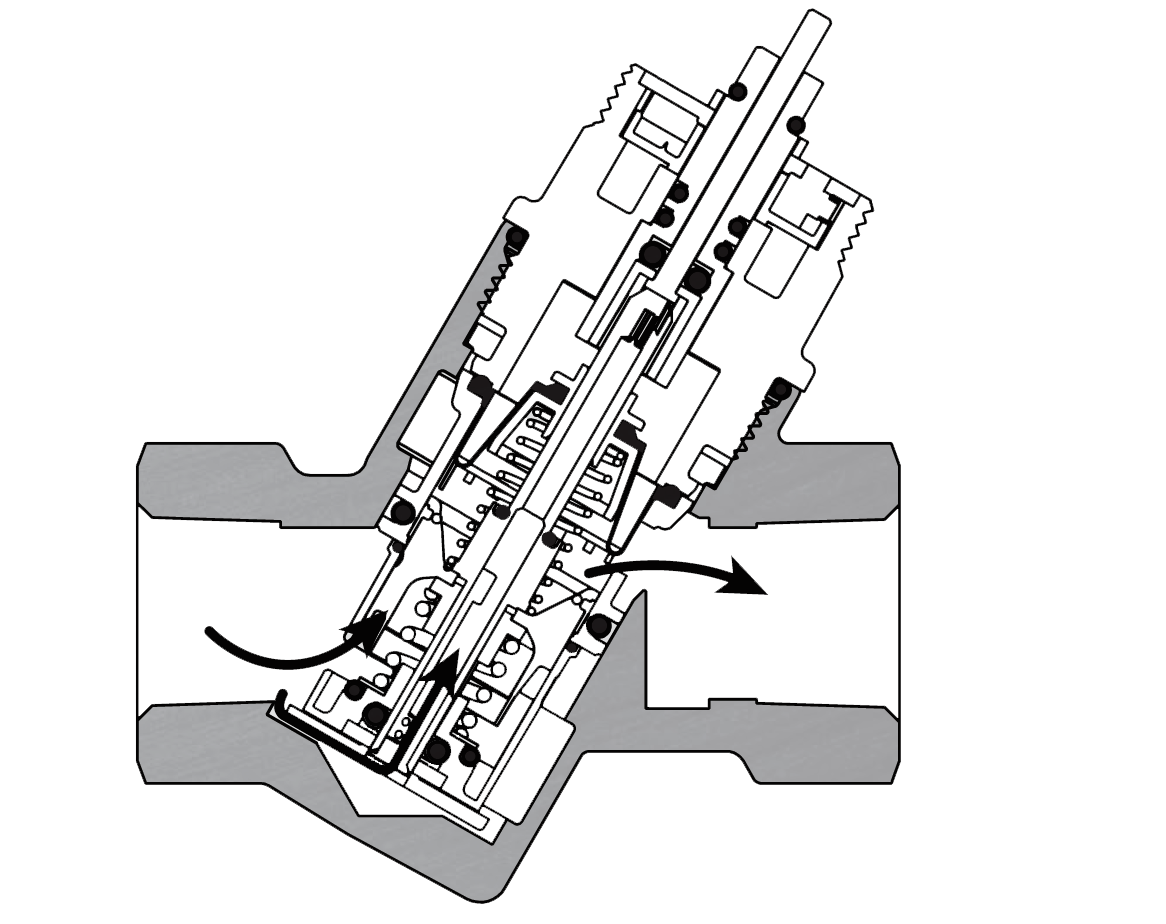Under Pressure
Pressure Independent Control Valves (PICV): Principle of Operation
Pressure Independent Control Valves (PICV) can help reduce energy costs and increase occupant comfort in heating and cooling coil applications in
buildings. A PICV is best described as two valves in one: a standard 2-way control valve and a balancing valve.
PICV obtain optimal results because only the necessary amount of hot water (in GPM) and chilled water (in GPM) is delivered to the heating and cooling coils.
Standard 2-way control valves allow for overflow and underflow especially if the CV is oversized or undersized. This generates excess water to the pump
to compensate for their inaccuracy, which increases pumping cost.
The actuators on PICV valves do not cycle as often as standard 2-way valves to compensate for pressure changes in the system that impact the flow,
which results in energy savings.
Here is a simplified explanation of PICV operation using a two-valve system. The second valve (V2 in the graphic below) regulates the pressure differential
across the first valve (V1) using a rolling diaphragm element counter-acted by a spring. The first valve is a calibrated variable orifice device adjusted by
the actuator (similar to a standard modulating control valve).

The diaphragm reacts to the system and regulates the pressure differential across the actuated control valve orifice to maintain its flow rate.
On a PICV (see graphic below), when pre-setting the maximum flow rate, the inlet orifice changes in size, which does not interfere with the length of the stroke.
When modulating, the orifice areas are affected by the actuator using the full stroke. This results in the orifice area changing in size with a vertical movement.
